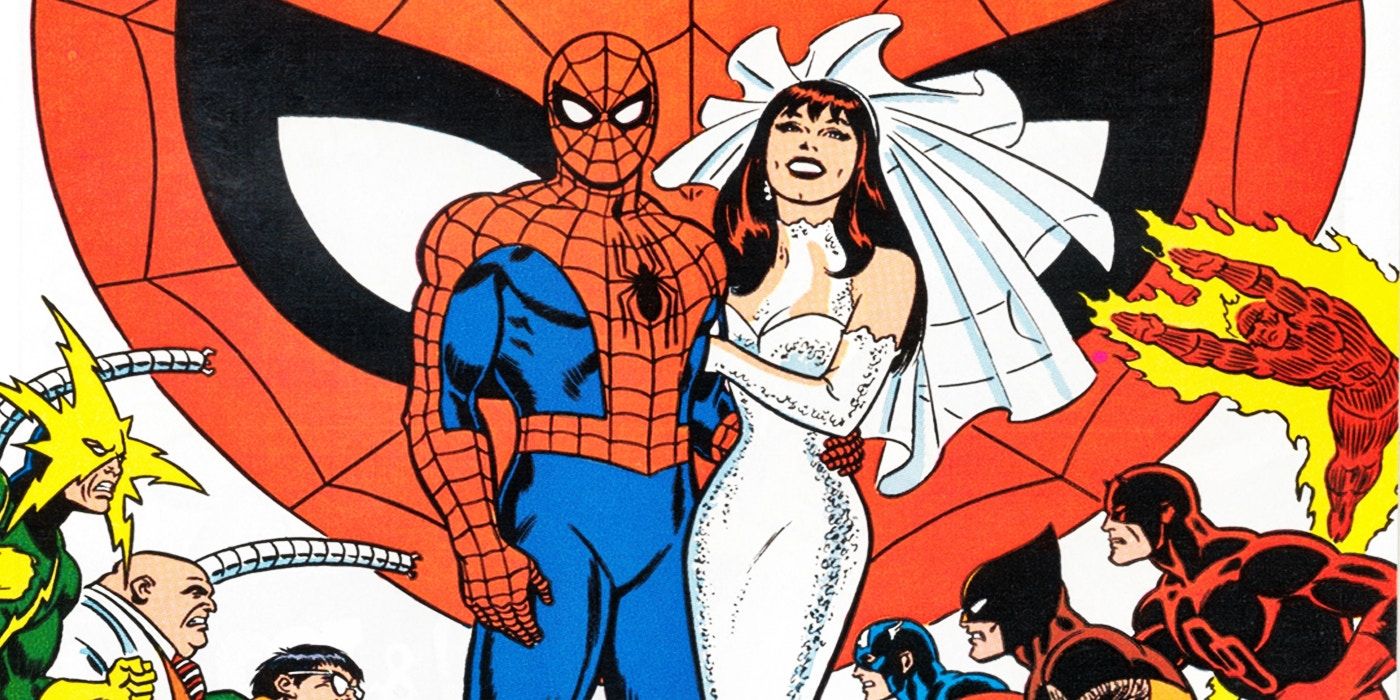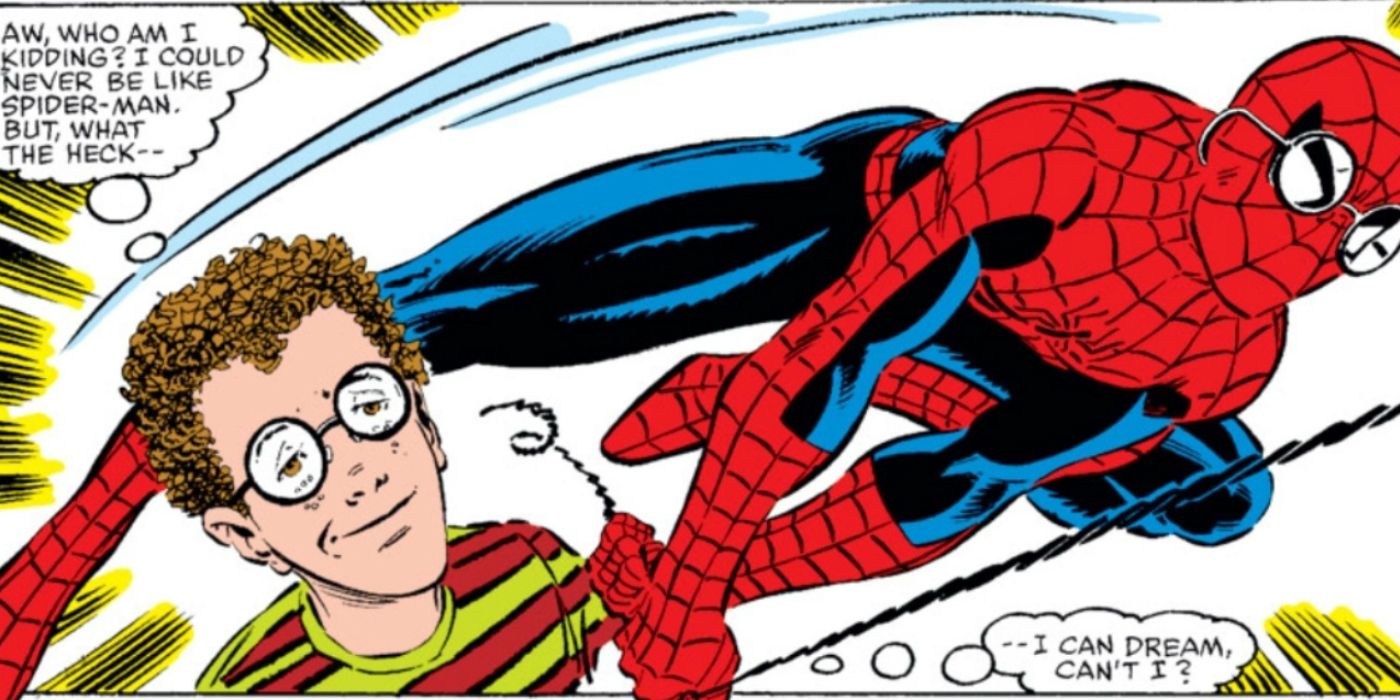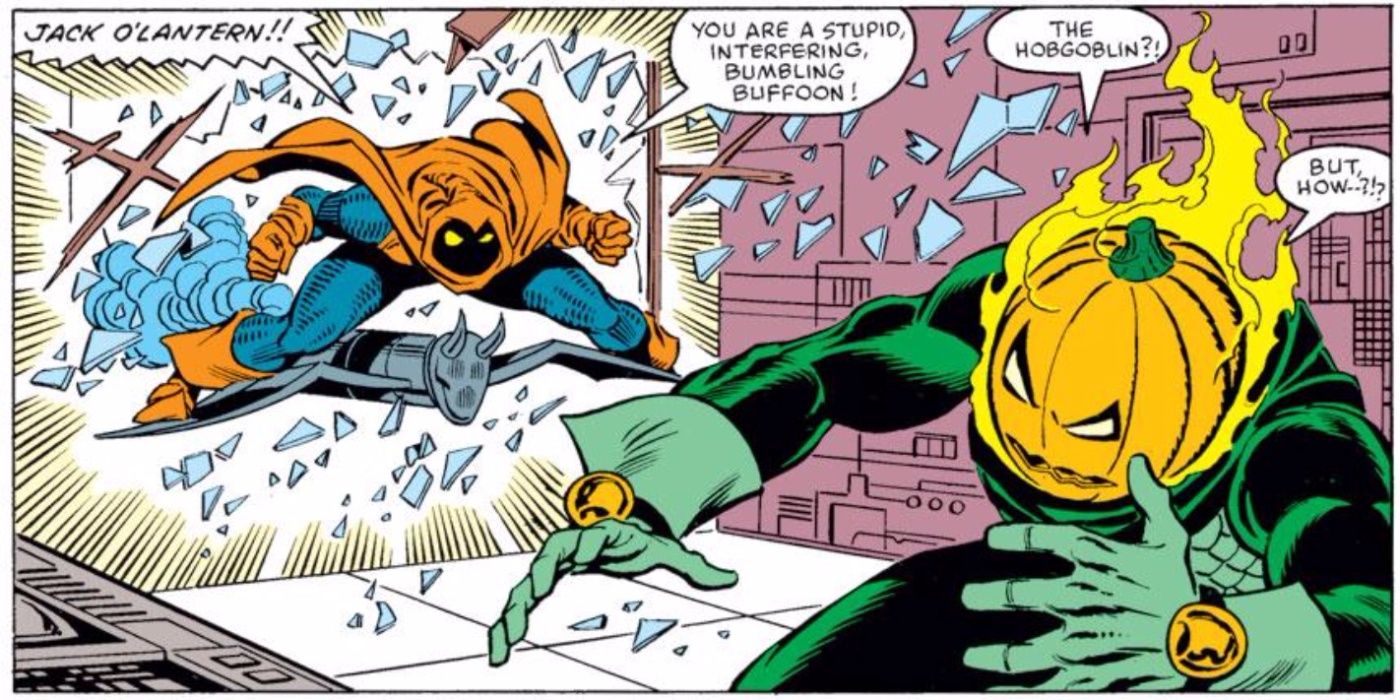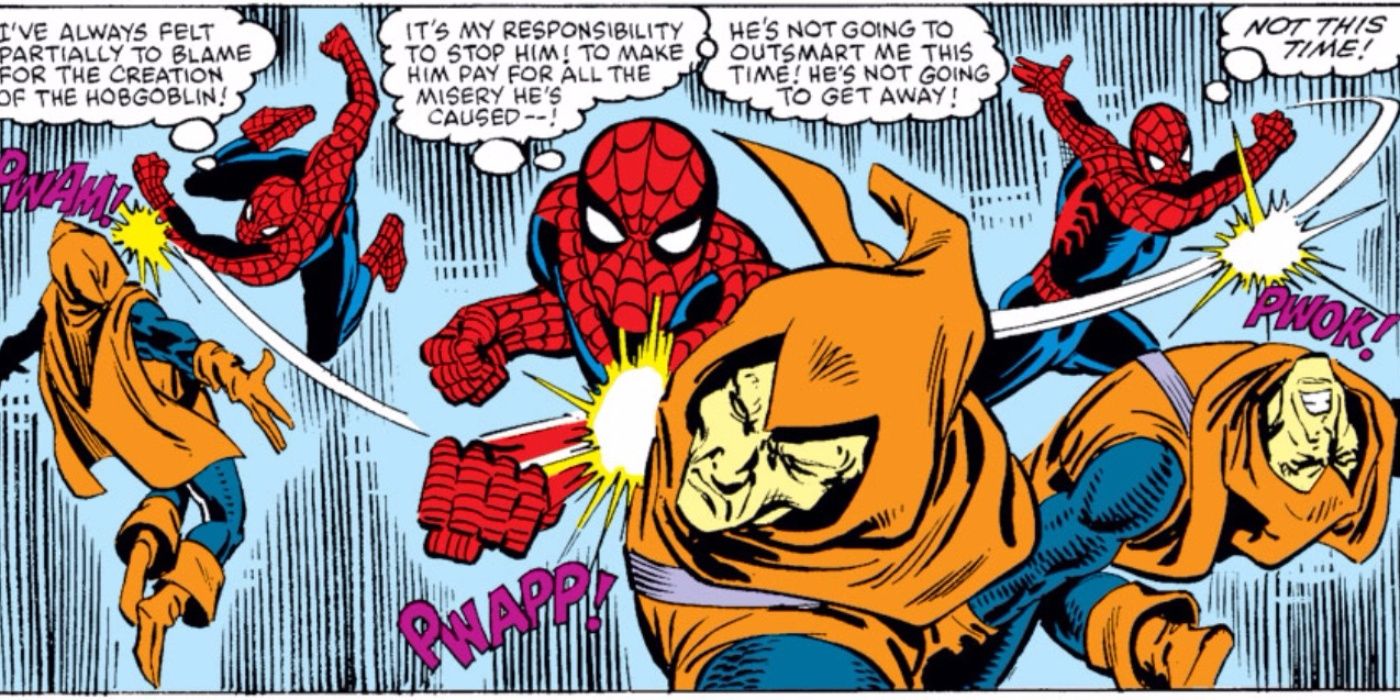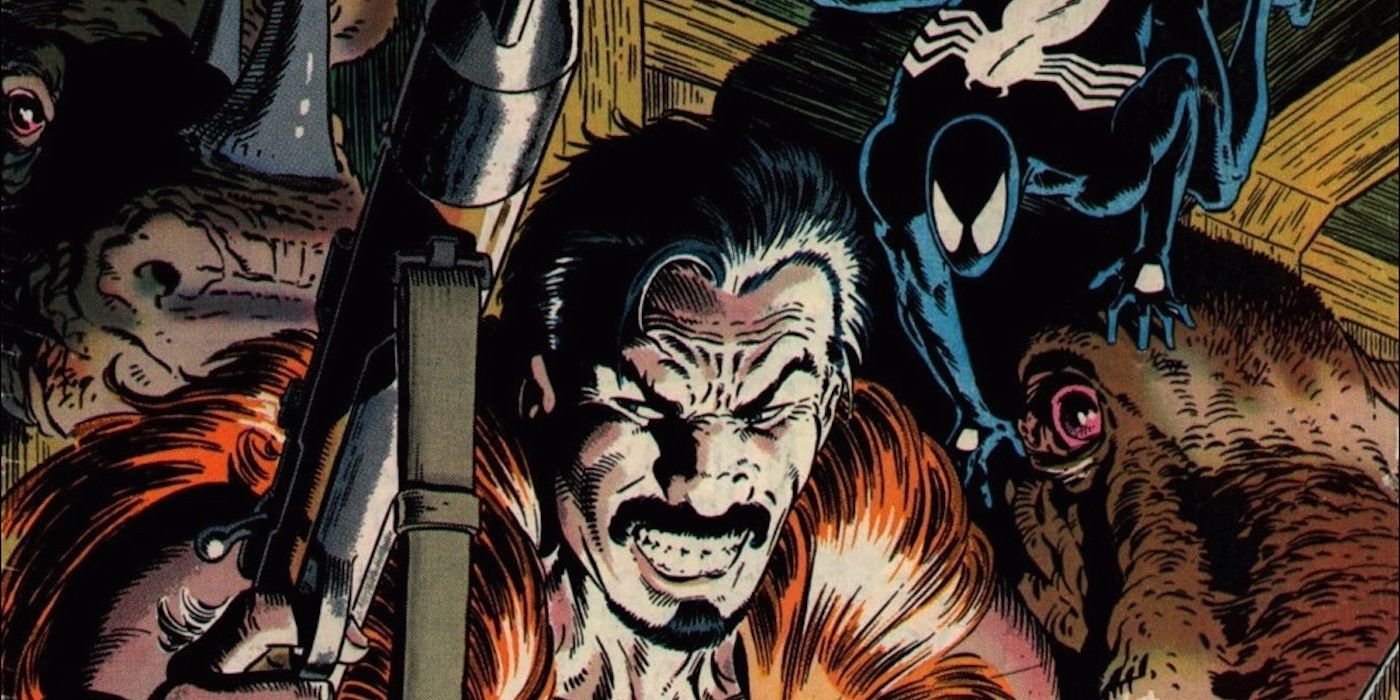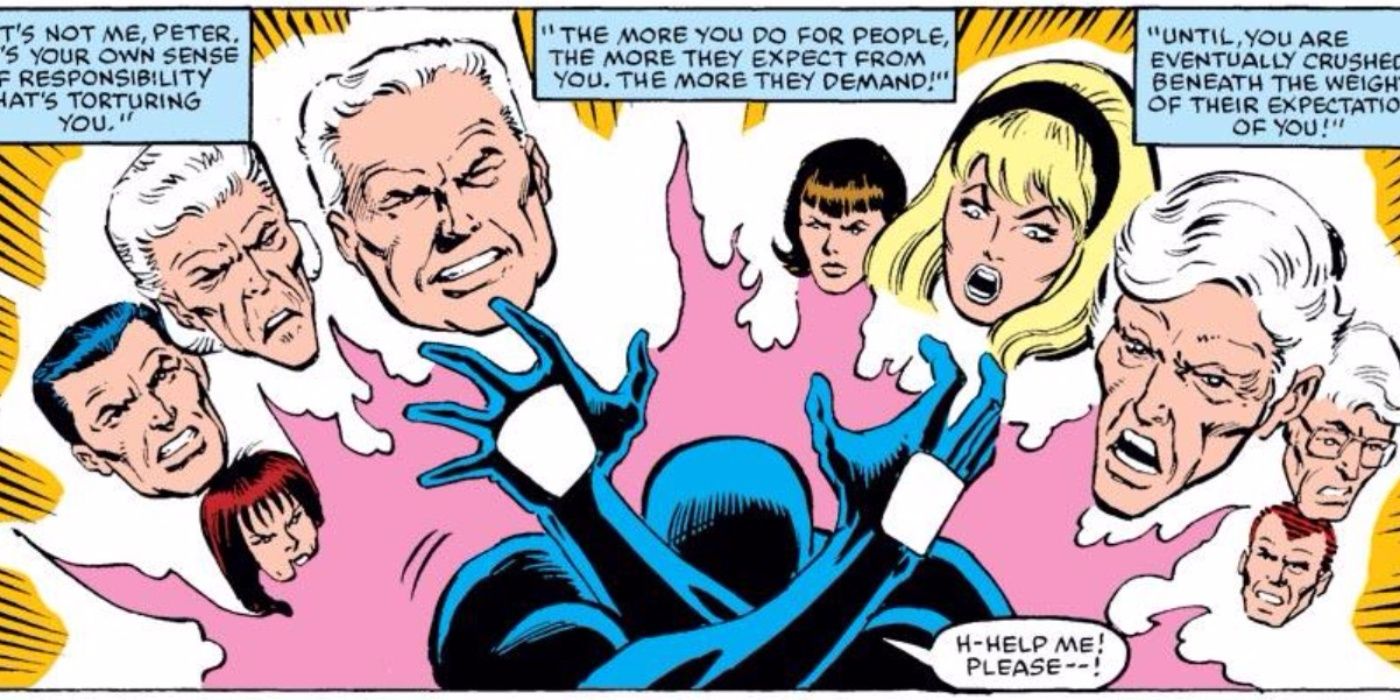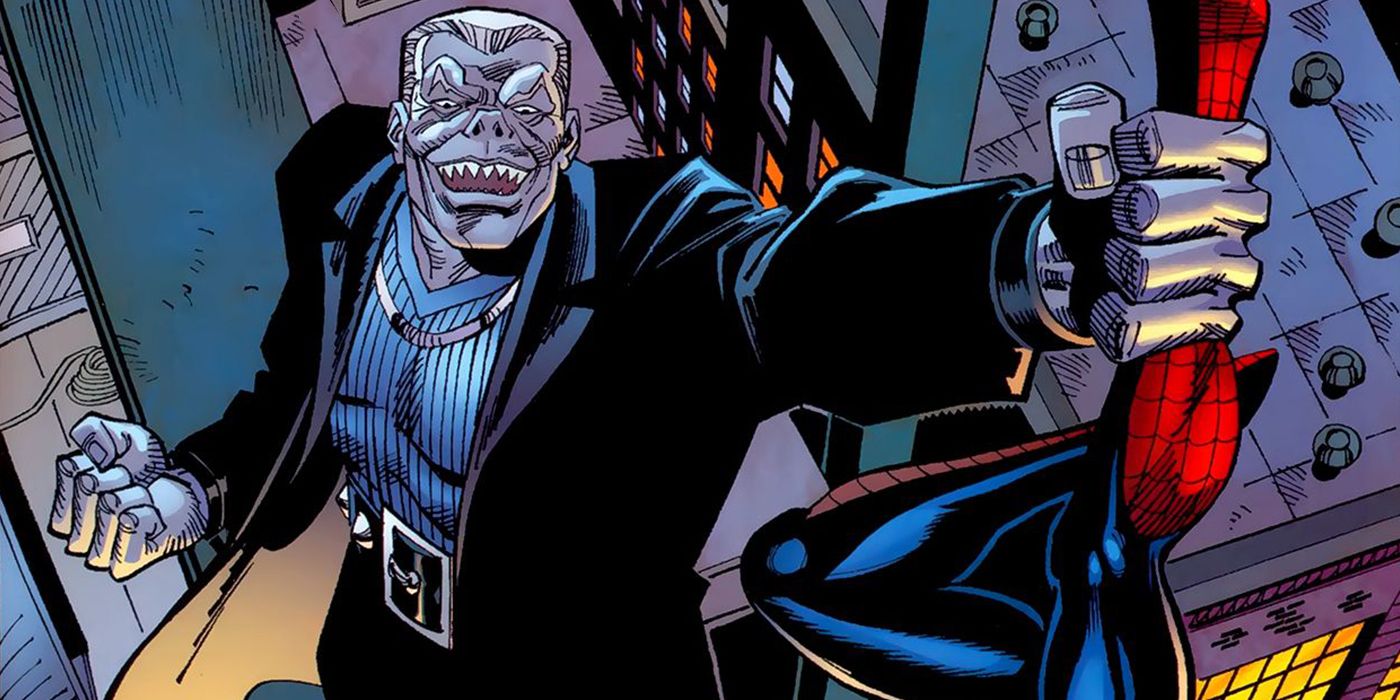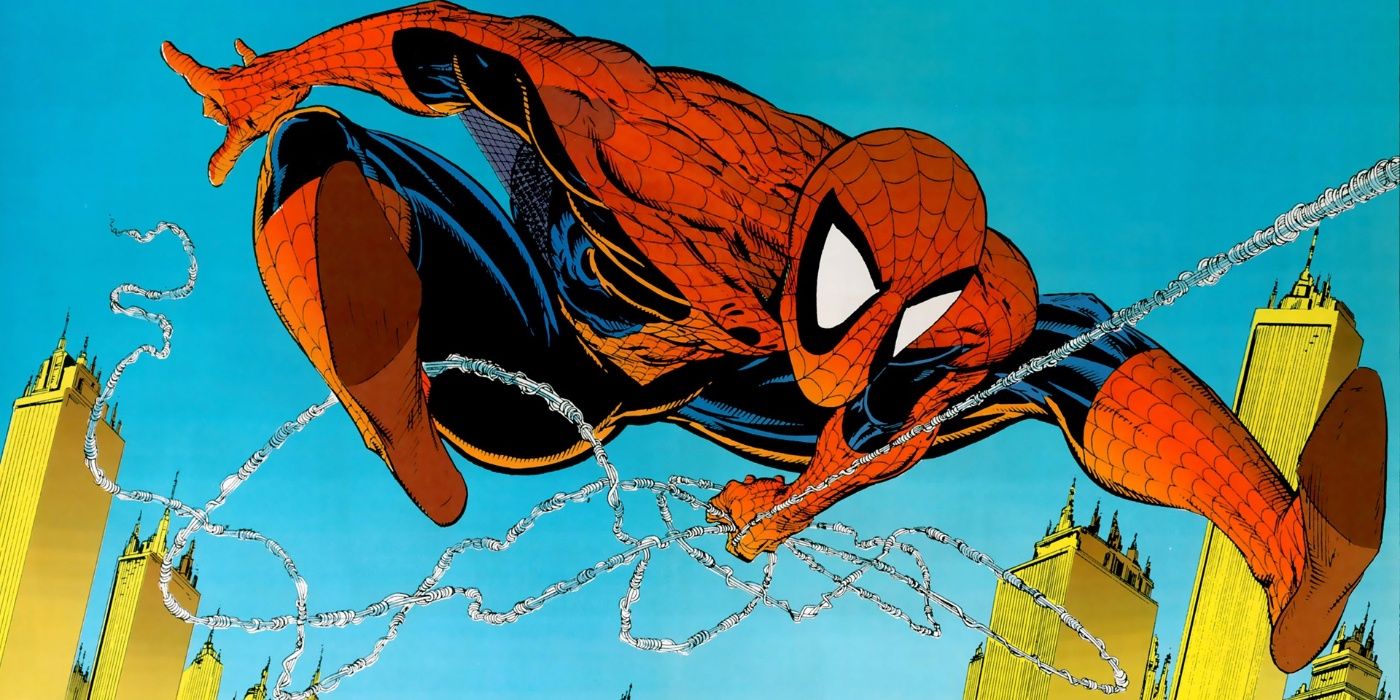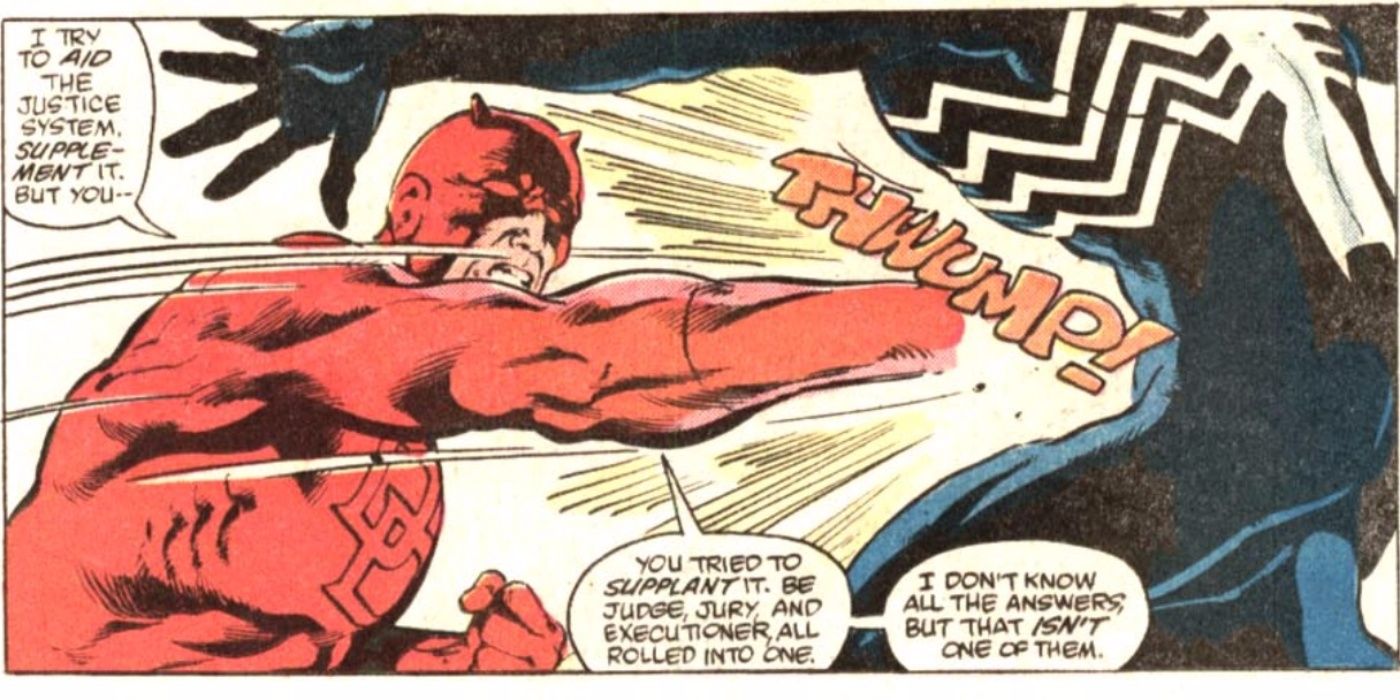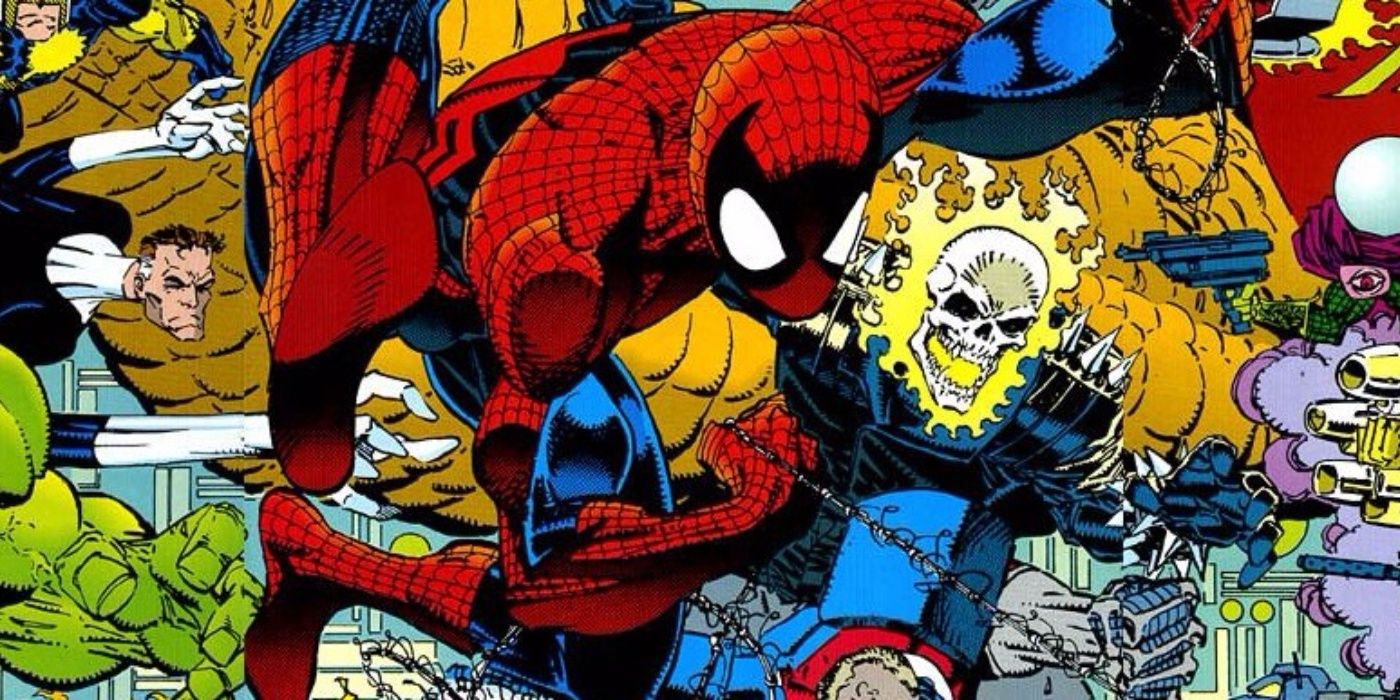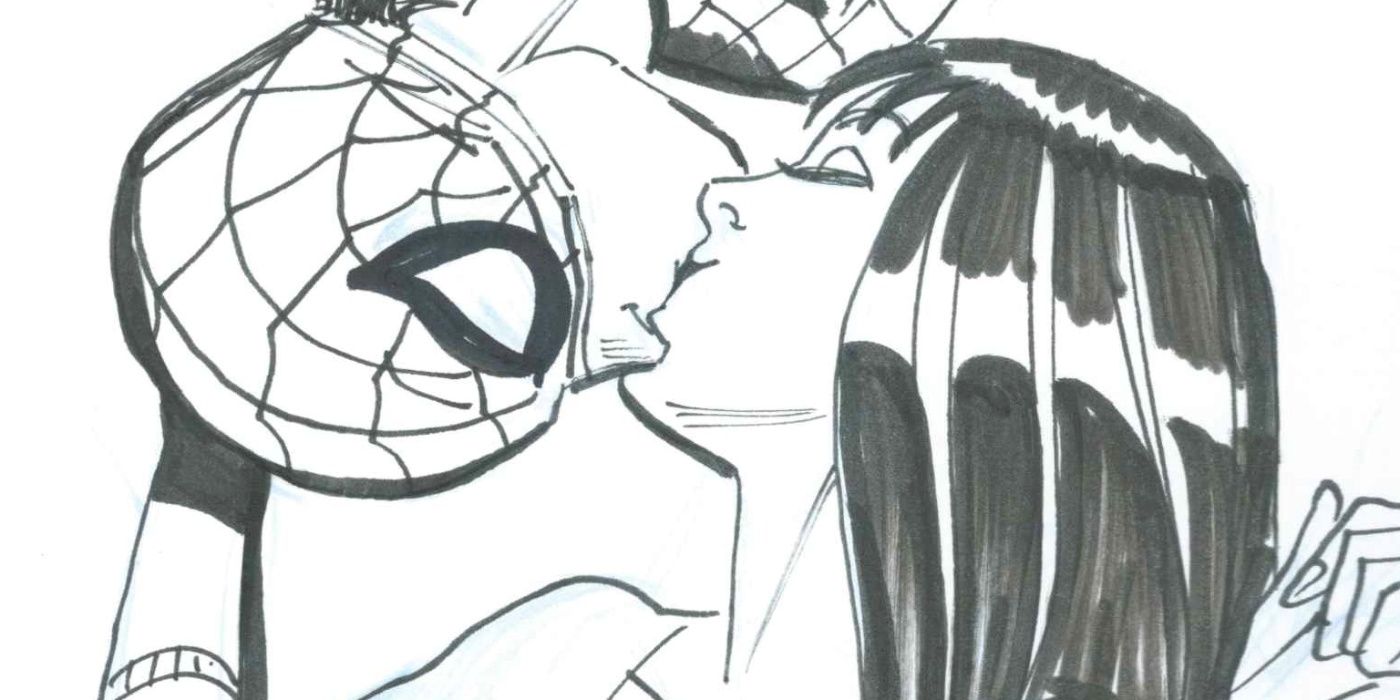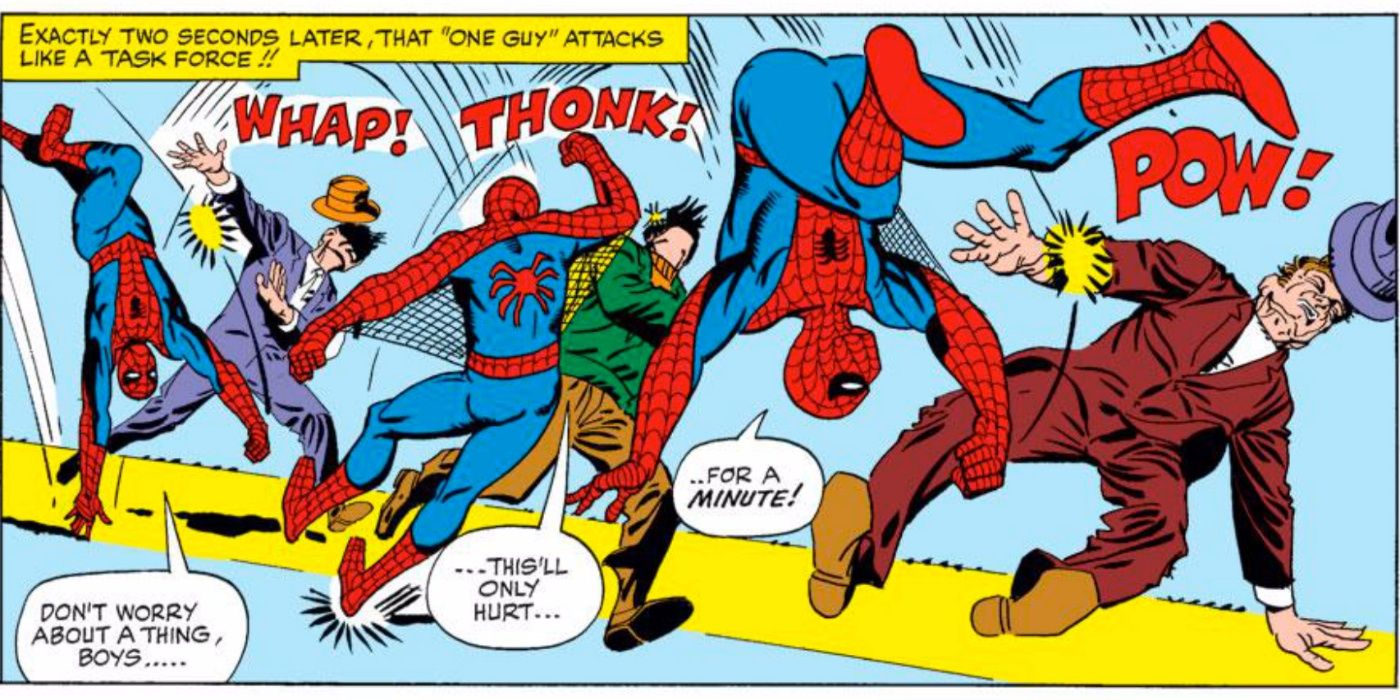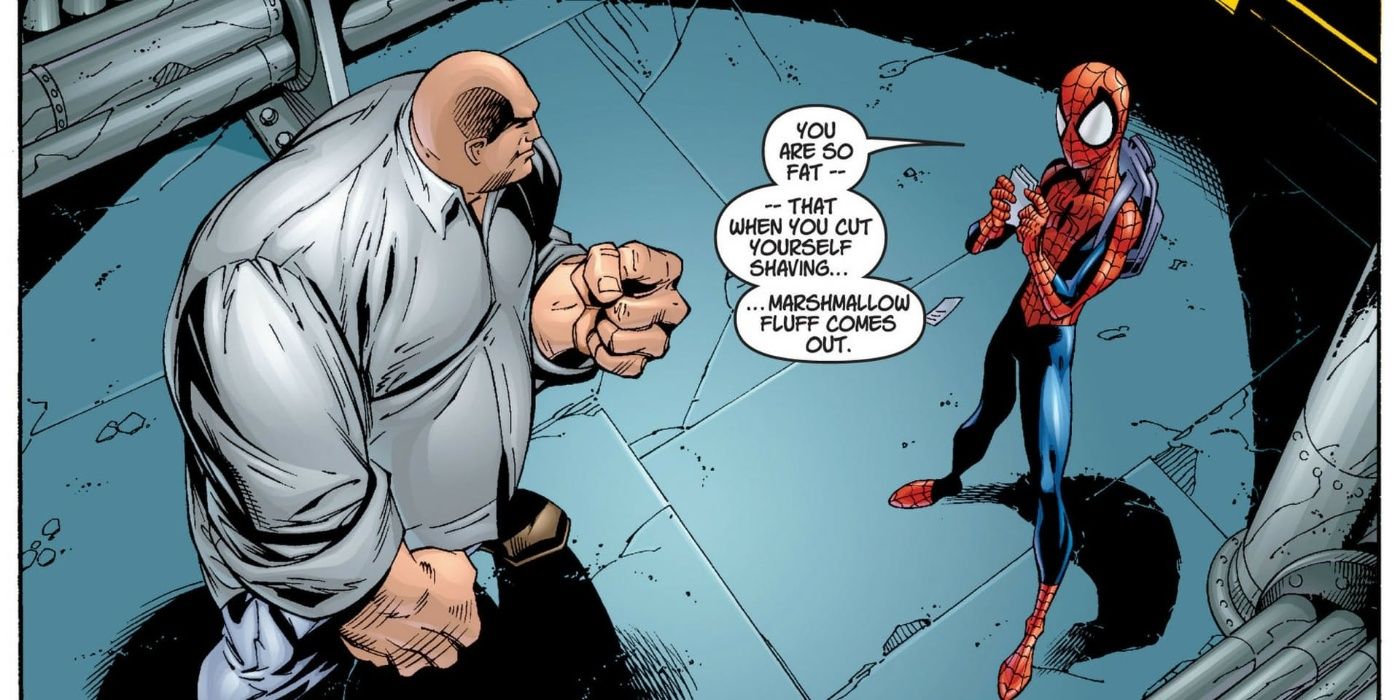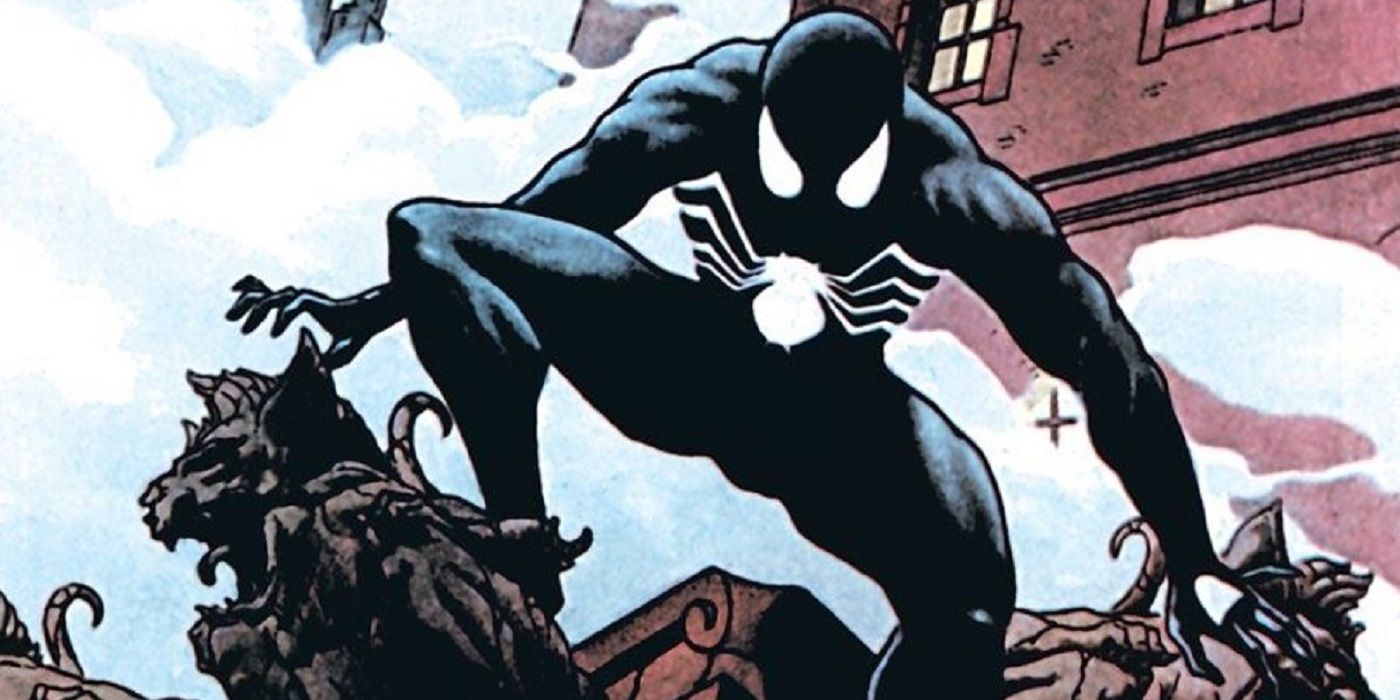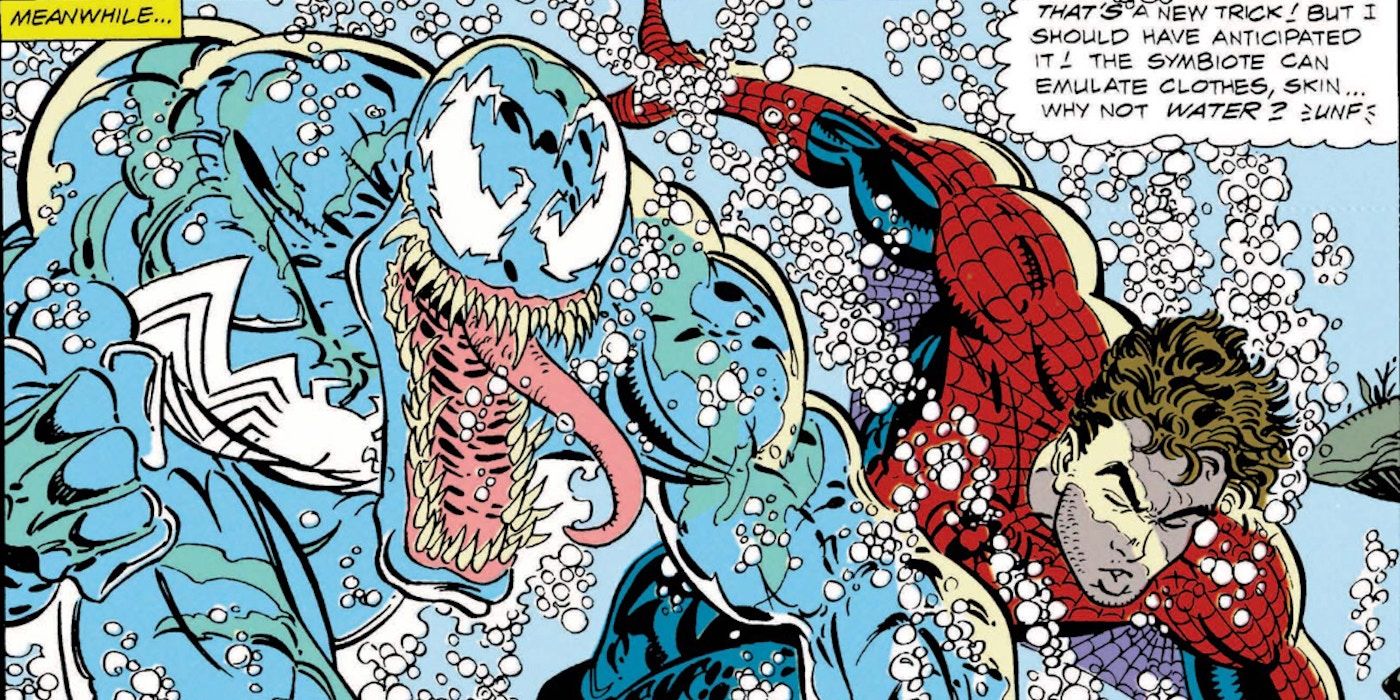Debuting in the final issue of “Amazing Fantasy” in 1962, no one could’ve predicted the enduring worldwide popularity of Stan Lee and Steve Ditko’s neurotic web-slinger. While Spider-Man’s popularity endures to this day, and will likely survive for many decades to come, one era holds a special place in many fans’ hearts. Yes, the 1960s birthed the character, and the 1970s changed comics forever with the death of the hero’s love interest Gwen Stacy, but the 1980s are the decade that redefined Spidey and provided much of the blueprint for how modern superhero stories are told.
RELATED: SENSATIONAL: Spider-Man's Cheekiest Bedroom Antics
At the start of the decade, no fan could’ve predicted Spider-Man’s upcoming renaissance. Readers were paying more attention to the Avengers, X-Men, and the recently revived Fantastic Four. Spider-Man was firmly entrenched as Marvel’s mascot, but there wasn’t a lot of heat surrounding him. Here are 15 events that altered the decade…
15 SPIDER-MAN’S REBIRTH UNDER ROGER STERN & JOHN ROMITA, JR.
Readers of a certain age will fight you to the death over this -- the Stern/Romita “Amazing Spider-Man” issues are the greatest comics starring the web-slinger, and they’ll tolerate no opposition. Their perspective is understandable; “Amazing Spider-Man” had been in a bit of a lull at the time, and desperately needed a shot of new energy. This came in the form of Roger Stern, who’d been preparing for this run over on the “Spectacular” spinoff, and John Romita, Jr., the son of a legend who was about to become one himself.
Stern’s affection for the mythos is evident from his first issue, and his stories saw no shortage of crowd-pleasing moments. The return of Mary Jane, the first-ever attempt to flesh out the Vulture (after over 20 years!), ingenious villain choices (like the famous Juggernaut fight), and a darned inventive twist on reader requests for the return of the Green Goblin. The stories move briskly, evoking numerous classic moments, but never coasting on nostalgia. To some fans, the Stern/Romita “Amazing” comics are the highlight of ‘80s Marvel, even surpassing Walt Simonson’s “Thor,” Chris Claremont’s “Uncanny X-Men,” and Frank Miller’s “Daredevil.”
14 THE MYSTERY OF THE HOBGOBLIN
Roger Stern wanted the mystery of new villain Hobgoblin’s identity to stretch out one issue longer than Stan Lee’s original Green Goblin mystery. He could’ve never predicted that the plot wouldn’t have a true resolution until over a decade after it began. Thanks to some editorial confusion, and a sense from editor-in-chief Tom DeFalco that Stern’s original choice for the Hobgolin’s secret ID was a dud, fans were ignorant of Hobgoblin’s true identity until 1996’s “Hobgoblin Lives!” miniseries.
Reader response to the revelation was mixed, but during the early days of the Hobgoblin mystery, fandom was hooked. Who was the Hobgoblin? Every issue dropped new hints and readers were citing evidence that everyone from Flash Thompson to J. Jonah Jameson was the culprit. The Internet would’ve likely killed the mystery today, with its appetite for spoilers, numerous leaks and the ability of readers to pool together and kick around theories. It’s unimaginable that comic fans will ever experience another mystery like this again.
13 THE DAWN OF THE TOM DEFALCO & RON FRENZ TEAM
Tom DeFalco and Ron Frenz are close collaborators with a deep love for classic Marvel, known for their runs on numerous superhero titles. They first came together on “Amazing Spider-Man” in 1984, when the creators were gradually nudged on to the book. Both thought they were doing fill-ins for the Stern/Romita team, but ended up as the regular creators after a few issues. The DeFalco/Frenz years have fierce defenders, and it’s easy to see why.
Frenz, who debuted with the legendary “Kid Who Collects Spider-Man!” tale with Roger Stern, brought a heavy Ditko feel to the book, not only reviving certain elements of the original Spider-Man design, but also incorporating Ditko’s nine-panel grids into the storytelling. (Years before “Watchmen” made it cool.) Tom DeFalco’s stories always had a sense of Stan Lee about them, but the writer was also adamant about introducing new characters. This led to durable figures like Silver Sable, the Black Fox and Puma. Notable issues from this run include the origin of MJ, the Sandman’s move away from villainy, and in the “Secret Wars II” crossover issues, a controversial battle with Galactus’ herald, Firelord.
12 KRAVEN’S LAST HUNT
Marvel editors used to cite the “Kraven’s Last Hunt” storyline as evidence that Marvel didn’t need to reboot its characters, because they “got them right the first time.” Creators J. M. DeMatteis and Mike Zeck didn’t have this in mind when developing the storyline, which ran almost-weekly through the “Amazing Spider-Man,” “Spectacular Spider-Man” and “Web of Spider-Man” titles. They just wanted to craft great comics.
The genesis of the idea -- a hero is buried alive by a villain and fights his way out of the grave -- was originally conceived by DeMatteis for Wonder Man, before he toyed with using Batman in the role. Eventually, Spider-Man was chosen as the unlucky hero, and what followed was an unforgettable tale of obsession, madness and redemption. While the story is often cited as evidence of comics growing darker in the ‘80s, the heart of it rests on Peter Parker’s dedication to his new bride, Mary Jane. Just as memorable is DeMatteis/Zeck’s depiction of an increasingly unhinged Kraven the Hunter, a onetime joke character who shocked fans with his tortured portrayal in this story…and his actions in the final chapter.
11 THE SUPPORTING CAST
One of the innovations of the original Lee/Ditko “Amazing Spider-Man” run was the development of a supporting cast that rounded out the book, making Peter Parker’s world feel more realistic. Later writers continued this tradition, but it wasn’t until the 1980s that readers saw the true potential that resided in the concept.
The secrets of Mary Jane’s past, Flash Thompson’s evolution as a person (and his failed relationship with Sha-Shan), Aunt May finding love again, Joe Robertson’s guilt over a long-buried secret, the birth of Harry and Liz Osborn’s son, the bulimia battle of Kristy Watson and so many more…Peter’s friends, rivals and family members are frequently just as entertaining as his alter-ego’s slugfests. Often, they’re even more entertaining.
What other comic book franchise hero has to leave a supervillain brawl early in order to deliver a teddy bear to his best friend’s newborn? Or feels guilty because he can’t help his one-time rival find direction in life, now that high school is over? These are the elements that truly define the “Spider-Man” titles, and 1980s creators crafted the finest series of character subplots the franchise has ever seen.
10 “TOMBSTONE!”
Unjustly overlooked for years, the creative team of Gerry Conway and Sal Buscema is only now seeing a significant portion of their “Spectacular” run (literally “spectacular” in this case) going back into print. Conway will always be best known as the writer who killed Gwen Stacy, but he cites the extended Joe Robertson/Tombstone arc from this era as his favorite Spider-Man storyline. And with good reason -- it’s a story that not only introduced a great villain, but also humanized a bit player who everyone seemed to like, but no one seemed to know too well.
When Joe discovers that a mob hitman named Tombstone has landed in New York, his life is in upheaval. Readers are on the hook as to why this new villain has such an impact on Joe, until he finally tape-records a confession. Joe, as a young reporter, witnessed Tombstone murder a man and was too terrified to ever report the crime. This makes Joe himself guilty of a felony, and the consequences shatter his life. Expertly rendered by Buscema, who made his return to Spider-Man in this era, no reader could ever forget this story.
9 THE DAVID MICHELINIE & TODD MCFARLANE TEAM
David Michelinie was already one of Marvel’s better-known writers at the time, while Todd McFarlane was a new guy with an unusual, cartoony style. When they were paired together on “Amazing Spider-Man,” no one could’ve predicted what happened next. “Amazing Spider-Man” exploded in popularity within a few months, soon threatening “Uncanny X-Men” as the industry’s dominant title.
Michelinie took his inspiration from the lighter elements of Stan Lee’s writing, which melded well with the goofy charm of McFarlane’s pencils. McFarlane’s tendency to cover his pages with rendering details, play around with panel layouts, and give Mary Jane va-va-voom make-overs also made “Amazing” a unique reading experience. Michelinie’s plots, meanwhile, carefully blended old and new villains, numerous subplots and the tricky question of just how Peter’s life was going to change, post-marriage. With the aid of McFarlane’s pencils, every issue was the perfect blend of new and classic elements. Very few creators have accomplished this feat, and it’s one reason why this remains one of the classic superhero runs of the 1980s.
8 THE ALL-NEW, ALL-DARING PETER PARKER, THE SPECTACULAR SPIDER-MAN
Sure, it might be the most cumbersome title in comics history, but the stories inside were certainly memorable. By the mid-1980s, “Peter Parker, The Spectacular Spider-Man” was perhaps the weakest title in the "Spider-Man" line. DeFalco/Frenz were enjoying success on “Amazing,” and “Web of Spider-Man” was the new, hip book that was attracting talents like Marc Silvestri and Kyle Baker. “Spectacular,” however, was viewed as rather corny by new editor Jim Owsley, who wanted to institute radical changes to the book.
Radical change meant the creative team of Peter David and Rich Buckler. While David is known for bringing humor and pop culture to his stories, there is often a dark edge to his writing. The revamped “All-New, All-Daring Spectacular Spider-Man” took the darkness as far as the Comics Code would allow, focusing on the grimier elements of life in New York in the 1980s. The multipart “Death of Jean DeWolff” story arc could even be a “controversial” storyline from the present day, dealing with racial tensions, religion and the consequences of a hero making a terrible mistake. It was a daring take on the character, one that couldn’t last, but it definitely revamped a sleepy title.
7 THE ARRIVAL OF 'ERRATIC' ERIK LARSEN
How to continue the chart-topping success of “Amazing Spider-Man,” following the departure of superstar artist Todd McFarlane? Editor Jim Salicrup could’ve toned down the cartoony elements of the title, hiring a more traditional artist, or perhaps snatching a hot penciler away from rival DC. Instead, he hired another penciler more interested in caricature than photorealism.
Erik Larsen wasn’t quite a “name” in comics yet, but he’d been appearing as a fill-in artist on several titles, and just concluded a run on “The Punisher.” Larsen wasn’t a fit for the urban commando vibe of Frank Castle’s title, but he quickly found his way on “Amazing.” In fact, Larsen’s very first fill-in issue of “Amazing” hints at his ability to not only mimic McFarlane’s flair for page layouts, but to surpass it. McFarlane set the look for the title -- numerous panel shapes per page, heavy borders, tiny details hiding in the background -- and Larsen adapted his own style to it. Some fans unfairly accused Larsen of ripping McFarlane off, but in actuality, he was maintaining a consistent design sense while easing his way onto the title. “Amazing” maintained its popularity, bolstered by Larsen’s cartoonish energy and Michelinie’s solid stories.
6 THE SPIDER-MAN DEBUT OF ALEX SAVIUK
Alex Saviuk was never the kind of artist that “Wizard” magazine drooled over, but his work was deeply appreciated by hardcore Spider-Man fans. Saviuk was mentored in comics by legend John Romita, Sr. and more than any other artist of the era, Saviuk evokes the classic Romita look for Spider-Man. If you wanted to see the Spider-Man, you remembered from your wallet, flashlight, or pajamas, he was there monthly in “Web of Spider-Man.” Allowing other artists to experiment with Spidey’s look was a bold decision, but leaving “Web” as the place for the classic Spider-Man design not only appeased longtime fans, but it also helped to bring the struggling spinoff a sense of identity.
“Web of Spider-Man” was a decent seller, but clearly not much of a priority in 1988 when creators Gerry Conway and Alex Saviuk took over the title. Conway continued his style of (as he put it) “relentless subplotting,” while Saviuk gave fans consistently on-model interpretations of Spider-Man, his classic villains, and his supporting cast. Saviuk’s clean linework and attractive figures brought in readers, and his devotion to the wallcrawler has endured through the years, working on hundreds of comics and currently the “Spider-Man” newspaper strip.
5 REPRINTS APLENTY
It’s easy to take the current state of comics for granted; almost any story from Marvel’s past you’d want to read is either available in trade or as a digital download. The 1980s were a different environment, however, with the vast majority of Marvel’s back catalogue out of print. The decade began to see a change in this thinking, however, with the release of affordable digest reprints (competing with the ubiquitous Archie digests on newsstands), and the debut of the Marvel Masterworks series. Younger fans likely couldn’t afford the hardback, remastered reprints of Marvel’s early years, but readers with disposable income were finally able to enjoy full runs of the earliest “Amazing Spider-Man” issues in a durable, glossy format.
Perennial Spider-Man reprint series “Marvel Tales” shouldn’t be overlooked, either. The 1980s editors of the series always seemed to treat what could’ve been a throwaway title with respect. Stunning covers from McFarlane and Zeck, “popular demand” choices for reprints (like all of the early Punisher stories), and quirky backups featuring Spider-Ham and the work of cartoonist Fred Hembeck. And while those early ‘80s issues that swapped out the ‘60s cultural references did drive readers mad…doesn’t it seem funny today?
4 MARK BAGLEY’S INTRODUCTION TO MARVEL FANS
It’s hard to think of many artists who’ve consistently worked for over 25 years in the comic book industry, maintaining their popularity and dependably landing big assignments. Mark Bagley is one of the few and his early Marvel Universe work can be found on “Web of Spider-Man” fill-in issues from the late 1980s. (Yeah, his earliest jobs were on those New Universe comics, but who read those?)
Readers of “Web” saw an early hint of Bagley’s talent, as he juggled the numerous players in Gerry Conway’s elaborate gang war storyline, which pitted characters like Kingpin, Hammerhead and the Chameleon against a pair of Mexican werewolf brothers. Ridiculous? Sure, but it’s played with a straight face, and the storyline holds up today. Bagley was able to jump in, sell the drama, and also render some touching moments with the Parker family.
Years after proving himself on these fill-ins, Bagley was tapped to replace Erik Larsen on “Amazing Spider-Man.” After moving on to “Thunderbolts,” a new Marvel regime recognized Bagley’s knack for Spidey and hired him to reintroduce the hero in “Ultimate Spider-Man,” where Bagley went on to draw more Spidey comics than anyone in history.
3 THE BLACK COSTUME
Spider-Man changes costumes now about as frequently as NBC launches failed sitcoms. But in 1984, the web-slinger had only one outfit to his name. While artists had tinkered with Ditko’s original design over the years, the essentials of Spider-Man’s suit never wavered. Until “Secret Wars,” that is, when the mandate to create repercussions for every Marvel title participating in the event led to the decision to do the unthinkable: Spider-Man would be getting a new costume, and fans across the country were furious.
Rumor has it, the backlash was so fierce that Marvel was prepared to ditch the new outfit after its initial storyline. Something happened, though. Fans got a look at the sleek black ensemble and decided…hey, he still looks like Spider-Man. And it’s actually a fantastic design, thanks to artists Mike Zeck and Rick Leonardi. Many readers still view the look as the definitive Spider-Man costume. Spider-Man didn’t officially retire the black suit until the late ‘80s, and ever since, it’s been revived periodically in order to drum up sales or sell the importance of a specific event.
2 VENOM’S HERE, HUNGRY FOR BRAINS
Spider-Man had faced some nasty opponents before, but never one who’d threatened to eat his brains. (Or the reader’s dog, if he didn’t buy the next issue.) Venom became so popular, and overexposed, in the subsequent years that a backlash developed, but it’s hard to deny his initial appearances in “Amazing Spider-Man” are immensely entertaining.
Originally conceived as a female villain by David Michelinie, Marvel editorial decided that the new foe wearing Spider-Man’s alien suit worked better as a male antagonist. (According to legend, Tom DeFalco declared “Venom should be a guy! A big guy!”) Michelinie took the track of writing Venom as a spurned man-child, giddy at the thought of eviscerating Spider-Man one second, eagerly proving himself to be a true “protector of the innocent” the next. Rendered as a distorted, ridiculously muscled version of Spider-Man by Todd McFarlane, and later as a green-saliva covered monster by Erik Larsen, fans were instantly drawn to the villain. Contrasting Venom’s nastiness with his sincere love of innocence (and even Aunt May!) gave his stories a distinctive feel in his early appearances. Great comics, even if fans eventually got too much of a good thing.
1 THE MARRIAGE
Oh, we’re going there. While Marvel might view a “youthful” Spider-Man as more marketable across a multimedia platform today, fans from this era know better. Peter Parker was already firmly into his adulthood at the start of the decade (he graduated college in 1976!), and as Stan Lee discovered, a vocal segment of fandom wanted Peter married to longtime off-and-on girlfriend Mary Jane. Other readers hated the idea, but after the 1987 wedding, sales jumped on every title. The skepticism seemed to die out.
Rather than presenting the 1,000th iteration of illusion of change, Marvel took an actual risk and it paid off. A well-written MJ turned out to be as interesting a lead as Peter, fans discovered. Peter’s sense of responsibility, and the franchise’s legacy of strong supporting characters, fit perfectly with the concept of marriage. Read a story like “Kraven’s Last Hunt” and try to imagine it with a single, carefree Spider-Man. It’s just not the same story; the heart is gone. The marriage presented new story angles, while maintaining the unique themes of the series. That legacy has been squandered today, but readers can catch a glimpse of its potential in today’s “Renew Your Vows” series.
Do you think another era tops this one? Angry that the “Spider-Man vs. Wolverine” one-shot wasn’t included? Make your voice heard in the comments section!

